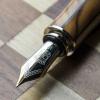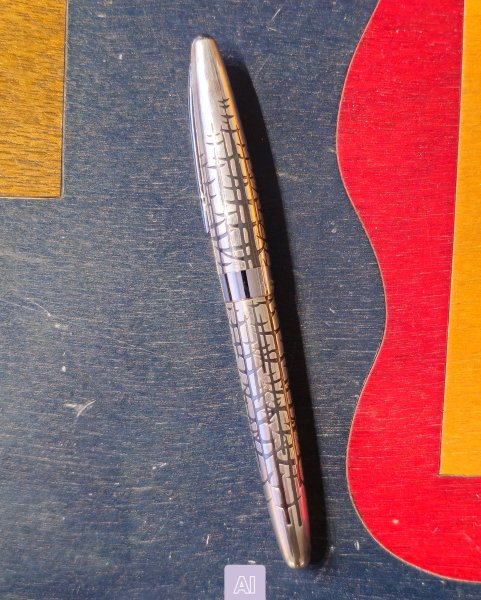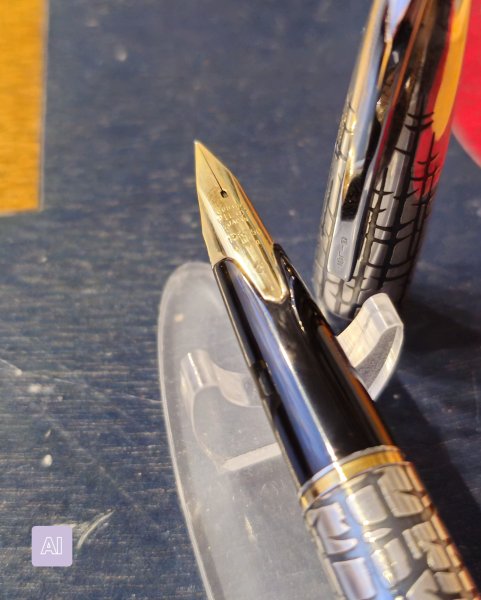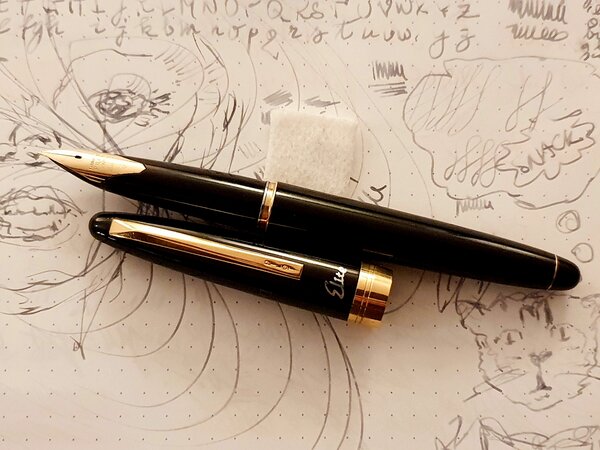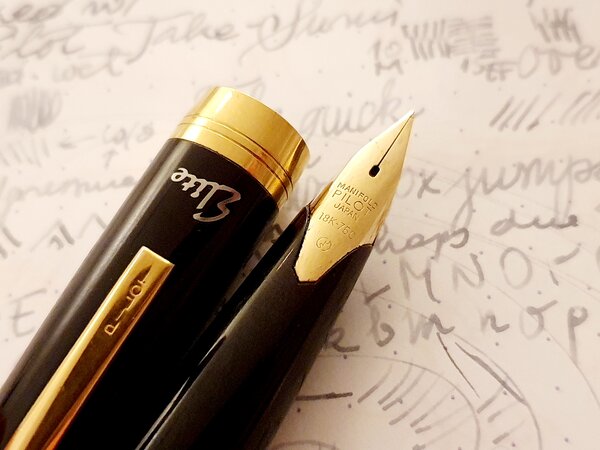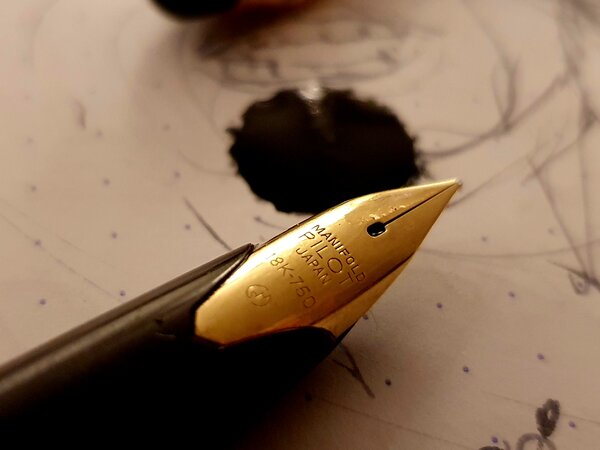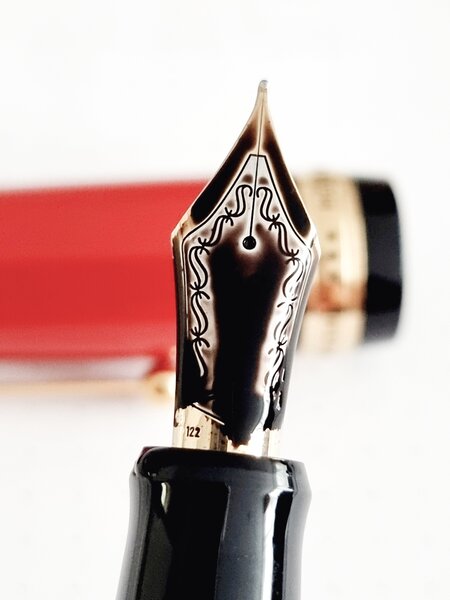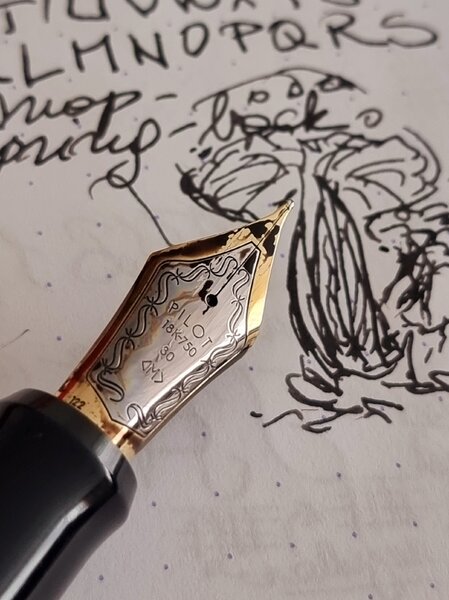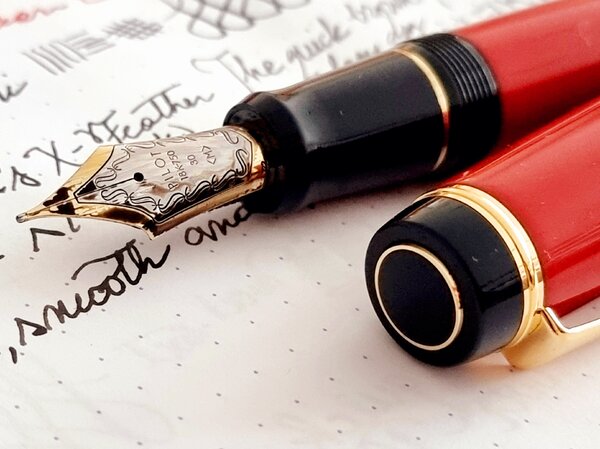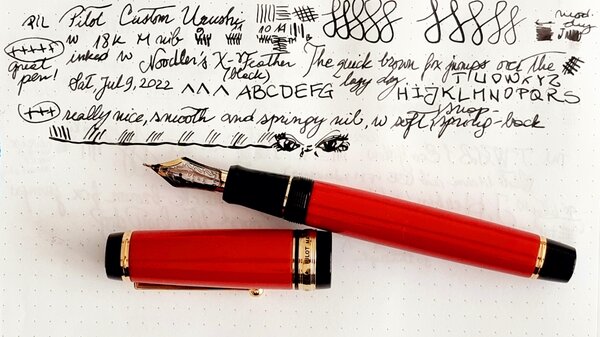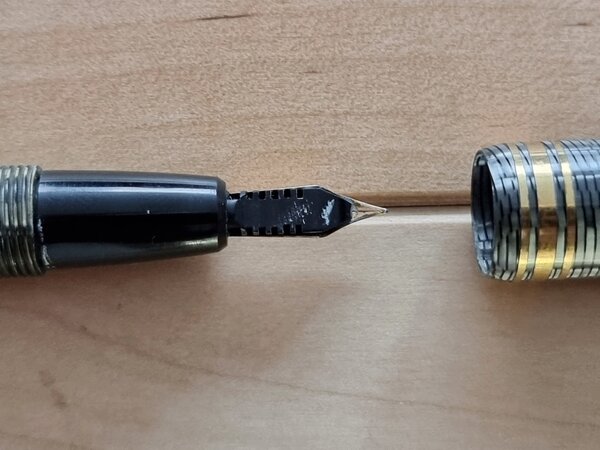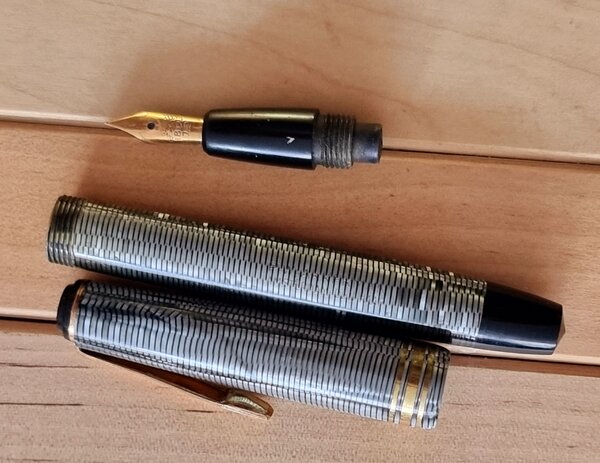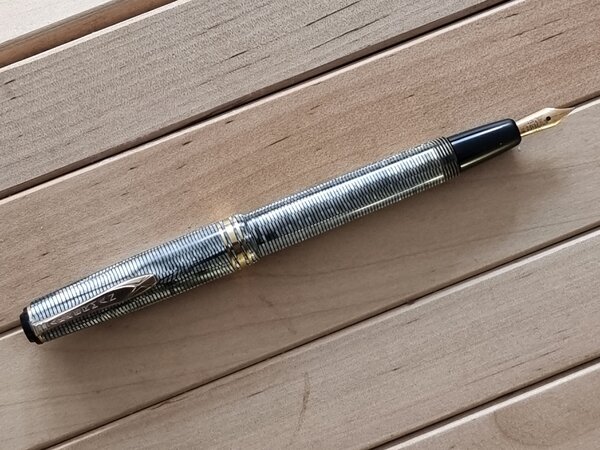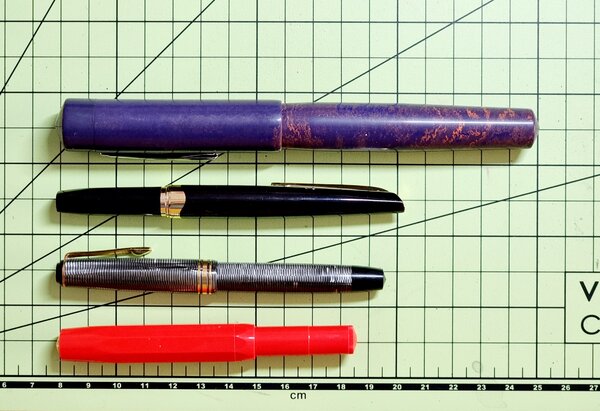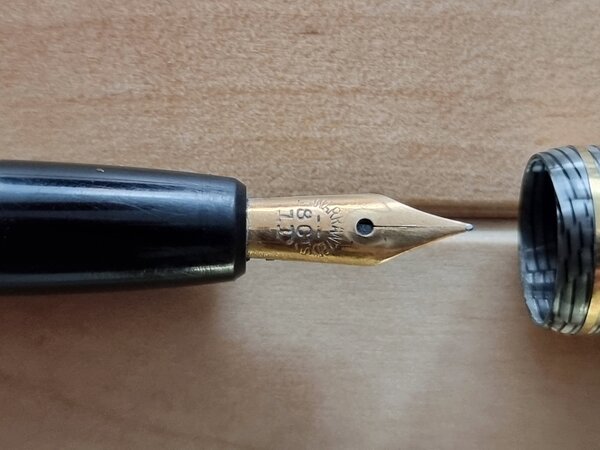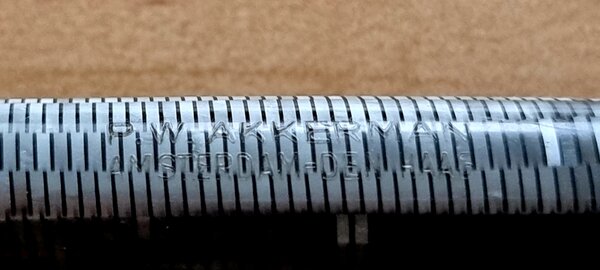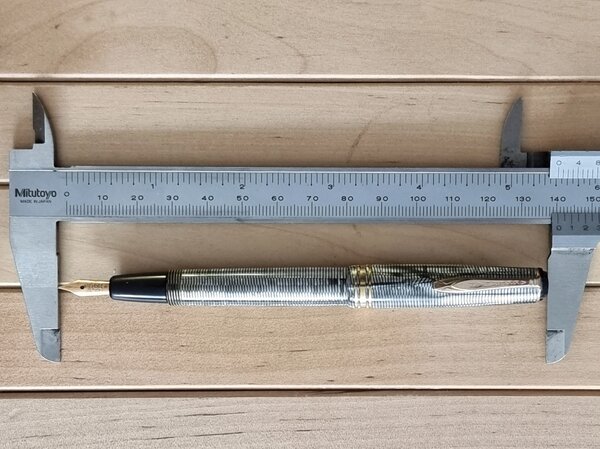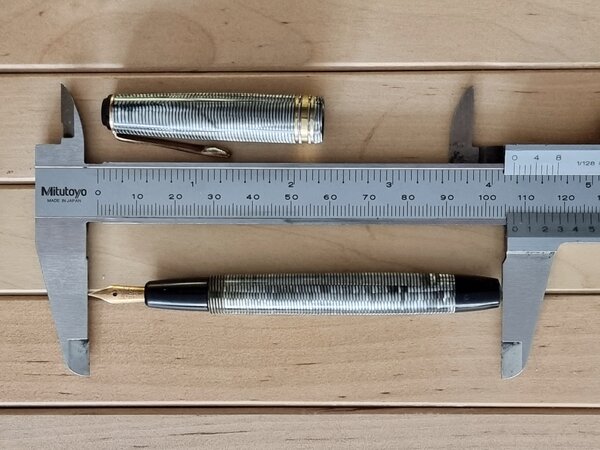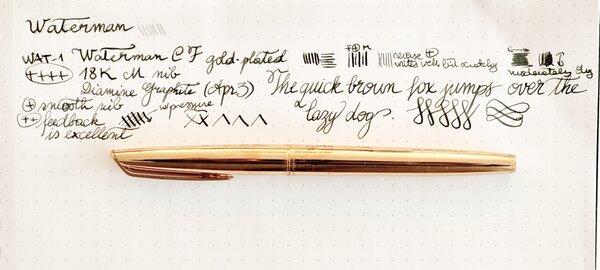Search the Community
Showing results for tags '18k'.
-
OMAS as you already know is a 90 year old Italian manufacturer of fine writing instruments and related luxury goods. Founded in 1925, it does carry the name of its founder, Armando Simoni. OMAS as it is, stands for Officina Meccanica Armando Simoni, which means workshop for machinery And initially f...
- 31 replies
-
PRELUDEThe search for a delectable nib After a brief hiatus from fountain pens, and a seemingly eternal interlude from reviewing pens, I was somehow on a lookout of a novel pen, which harnessed the excellence of this modern material age while preserving the flair of vintage brilliance. When zaddick...
- 77 replies
-
- chilton style
- pneumatic filler
-
(and 3 more)
Tagged with:
-
I have a Homo Sapiens Bronze Age with a broad nib that I love. Am now being tempted by a Magma and was considering the 1.3 stub nib - this would be recent production. What I am interested in are actual experiences (again more recent production) with the nib. How was it out of the box? Ho...
-
From the album: OldTravelingShoe's Random Pics of Japanese Fountain Pens
© (c) 2023 by OldTravelingShoe. All rights reserved.
- 0 B
- x
-
From the album: OldTravelingShoe's Random Pics of Japanese Fountain Pens
© (c) 2023 by OldTravelingShoe. All rights reserved.
- 0 B
- x
-
From the album: OldTravelingShoe's Random Pics of Japanese Fountain Pens
© (c) 2022 by OldTravelingShoe. All rights reserved.
- 0 B
- x
-
From the album: OldTravelingShoe's Random Pics of Japanese Fountain Pens
© (c) 2022 by OldTravelingShoe. All rights reserved.
- 0 B
- x
-
From the album: OldTravelingShoe's Random Pics of Japanese Fountain Pens
© (c) 2022 by OldTravelingShoe. All rights reserved.
- 0 B
- x
-
As most of you would know, Pelikan is a 180 year old maker of fountain pens and paraphernalia. It had launched its first fountain pen in 1929. Prior to that Pelikan manufactured dyes, inks and office-supplies. This Swiss-incorporated German pen maker is also credited with the genesis of piston filli...
-
From the album: OldTravelingShoe's Random Pics of Fountain Pens
© (c) 2022 by OldTravelingShoe. All rights reserved.
- 0 B
- x
-
- pilot capless
- pilot vp
-
(and 4 more)
Tagged with:
-
From the album: OldTravelingShoe's Random Pics of Japanese Fountain Pens
© (c) 2022 by OldTravelingShoe. All rights reserved.
- 0 B
- x
-
- pilot
- pilot custom
-
(and 3 more)
Tagged with:
-
From the album: OldTravelingShoe's Random Pics of Japanese Fountain Pens
© (c) 2022 by OldTravelingShoe. All rights reserved.
- 0 B
- x
-
- pilot
- pilot custom
-
(and 3 more)
Tagged with:
-
From the album: OldTravelingShoe's Random Pics of Japanese Fountain Pens
© (c) 2022 by OldTravelingShoe. All rights reserved.
- 0 B
- x
-
- pilot
- pilot custom
-
(and 3 more)
Tagged with:
-
From the album: OldTravelingShoe's Random Pics of Japanese Fountain Pens
© (c) 2022 by OldTravelingShoe. All rights reserved.
- 0 B
- x
-
- pilot
- pilot custom
-
(and 3 more)
Tagged with:
-
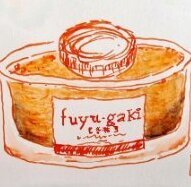
FP Akkerman 18K F nib 02b Nib Side-View.jpg
OldTravelingShoe posted a gallery image in FPN Image Albums
From the album: OldTravelingShoe's Random Pics of European Fountain Pens
© (c) 2022 OldTravelingShoe
- 0 B
- x
-
- akkerman
- p w akkerman
-
(and 2 more)
Tagged with:
-

FP Akkerman 18K F nib 02c Feed and Nib.jpg
OldTravelingShoe posted a gallery image in FPN Image Albums
From the album: OldTravelingShoe's Random Pics of European Fountain Pens
© (c) 2022 OldTravelingShoe
- 0 B
- x
-
- akkerman
- p w akkerman
-
(and 2 more)
Tagged with:
-
From the album: OldTravelingShoe's Random Pics of European Fountain Pens
© (c) 2022 OldTravelingShoe
- 0 B
- x
-
- akkerman
- p w akkerman
-
(and 2 more)
Tagged with:
-

FP Akkerman 18K F nib 03 Unpack upward.jpg
OldTravelingShoe posted a gallery image in FPN Image Albums
From the album: OldTravelingShoe's Random Pics of European Fountain Pens
© (c) 2022 OldTravelingShoe
- 0 B
- x
-
- akkerman
- p w akkerman
-
(and 3 more)
Tagged with:
-

FP Akkerman 18K F nib 01c Size Comparison.jpg
OldTravelingShoe posted a gallery image in FPN Image Albums
From the album: OldTravelingShoe's Random Pics of European Fountain Pens
© (c) 2022 OldTravelingShoe
- 0 B
- x
-
- akkerman
- p w akkerman
-
(and 3 more)
Tagged with:
-
From the album: OldTravelingShoe's Random Pics of European Fountain Pens
© (c) 2022 OldTravelingShoe
- 0 B
- x
-
- akkerman
- p w akkerman
-
(and 3 more)
Tagged with:
-

FP Akkerman 18K F nib 04 Body Engraving.jpg
OldTravelingShoe posted a gallery image in FPN Image Albums
From the album: OldTravelingShoe's Random Pics of European Fountain Pens
© (c) 2022 OldTravelingShoe
- 0 B
- x
-
- akkerman
- p w akkerman
-
(and 3 more)
Tagged with:
-

FP Akkerman 18K F nib 01b Size Posted.jpg
OldTravelingShoe posted a gallery image in FPN Image Albums
From the album: OldTravelingShoe's Random Pics of European Fountain Pens
© (c) 2022 OldTravelingShoe
- 0 B
- x
-
- akkerman
- p w akkerman
-
(and 3 more)
Tagged with:
-
From the album: OldTravelingShoe's Random Pics of European Fountain Pens
© (c) 2022 OldTravelingShoe
- 0 B
- x
-
- akkerman
- p w akkerman
-
(and 3 more)
Tagged with:
-
TL;DR: I acquired a Waterman fountain pen that I believe to be a Cartridge/Filled (C/F). The complete nib looks like it (see Figure 1). The nib unit corresponds to the typical C/F (Figures 2, 3). The other photos are also consistent with a Waterman C/F made in France (e.g., Figure 4). However, I can...
-

20220404_170535 Waterman CF + 18K M nib.jpg
OldTravelingShoe posted a gallery image in FPN Image Albums
From the album: OldTravelingShoe's Random Pics of European Fountain Pens
© (c) 2022 OldTravelingShoe
- 0 B
- x


